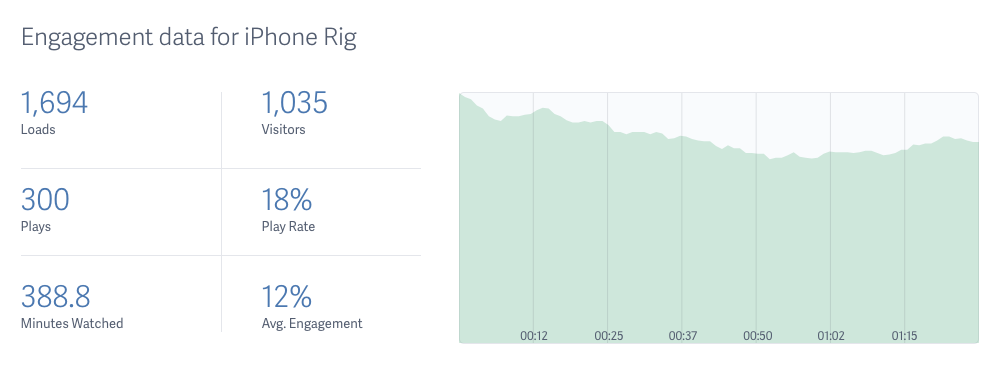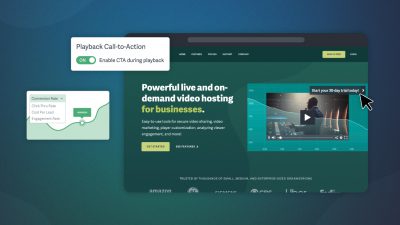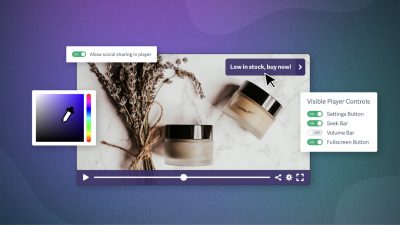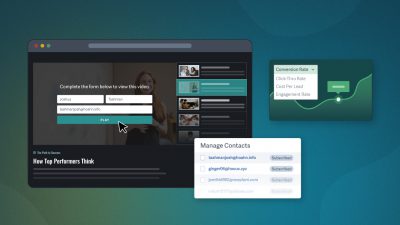In the world of marketing, making the most of your content is critical to running an effective and efficient campaign. While you could technically create new videos all the time for a video marketing campaign, this quickly becomes costly and time-consuming.
In other words, it’s not the best route to take for most people.
Video marketing is one of the most popular forms of advertising at the moment. One of its top benefits is how you can scale it to meet so many different goals and purposes. This essentially translates to you getting more views on your content using less time and money.
It’s easy enough to scale your video marketing content. However, here are four key ways that have proven to be particularly effective at getting results.
1. Repurpose Your Content for Different Platforms
The first strategy we’re going to talk about has to do with repurposing content that you’ve already published. Sharing or repurposing the same content you’ve already pushed out to people once before might sound like an ineffective and lazy way to go about things, but it’s actually an incredibly powerful tactic that not enough people are using.
If you’ve been creating video content for some time, you’ve likely shared it in a number of different ways. For example, if your company or brand has a YouTube channel where all of your videos get uploaded, you’re really only appealing to that one singular audience on your YouTube channel and no one else.
Another approach would be to create short-form and long-form versions of a video on a given topic. Release the extended “director’s cut” on your blog with in-depth analysis. Then run the short-form video on your social media channels with a link to the blog post. By piquing viewers’ interest with the shorter video, you’ll entice them to visit your site for more.
Using the materials you already have access to is the key to repurposing existing content. After you create so many videos covering so many topics, you’ll be able to repurpose these in new ways all the time to make fresh content out of content that already exists. For more ideas, read five habits of successful video marketers.
2. Social Media Isn’t Just For Selfies
Social media is perhaps one of the most challenging beasts to tackle when it comes to marketing. It’s extremely simple to post content and push it out to your audience. However, finding the best and most efficient way to do so can give you a headache if you aren’t sure where to start.

You can approach social media in a number of different ways. When it comes to video marketing, we suggest trying your hand at new social sharing options that have popped up over the past year or so.
If you’ve ever used Snapchat, Instagram, or Facebook, you’ve likely run across something on there called “Stories.” Stories is an area through which you can post photos and videos that are displayed on your profile for 24 hours before being automatically deleted.
This is a tool that’s becoming more and more popular with each day that passes. Stories are an awesome way to promote upcoming events for your company in a fun and exciting manner.
Have a sale on a product that’s coming up? Record a couple fun video clips to announce the upcoming savings! Have a quick question for your audience, or need their input? Throw a couple of quick videos up on your Stories page and ask right there.
Stories are quick, informal clips that require very minimal editing or planning. This raw, short style of video is becoming increasingly popular throughout all nooks and crannies of the social media game.
For more tips on expanding your reach on social media, you need to understand how social video is the new SEO.
3. Use These Tools to Take It to The Next Level
Finally, you can easily use tools to scale your video marketing that will allow you to see real results without spending a lot of dough.
You may be tempted to just upload a video and be done with it. However, there are a few extra steps that you can easily take to extend your reach, and gather even more data than what a simple upload would do for you.
Lead Capture
As one example, increasing the number of leads captured in your video campaign can be easily achieved by integrating a tool that requires viewers to add their email address before they can actually watch your video.
You likely won’t want to add this lead capture form to every single one of your videos. If you have a piece of content that’s especially good, or filled with super helpful information that people may even want to pay for, you can easily market it in a way that makes people more than happy to hand over their email address to view your content.
Personalized Video
Personalized video software is quickly becoming one of the hottest trends in the video marketing landscape. Despite its young age, more and more companies are using dynamic video to engage their customers without having to create a separate video for each one. It allows you to connect with your audience by adding personalized tokens to your video content. For instance, you could include a person’s name, or a product they’ve searched for on your site.
Personalized video helps to drive engagement for your audience with the content they’re consuming. As a direct result, your videos will be considerably more valuable.
Post Play Screens
You may also want to use a post play screen. A post play screen is appears after your video and creates a call to action for your viewers. It can be used in all sorts of ways, from surveys, to lead capture, to directing traffic to a landing page. For more ideas, check out our recent article on four smart ways to use customizable post play screens.
4. Track and Improve Over Time
One of the most important factors in successfully scaling a marketing campaign is to identify what works as early as possible. Then, do more of it. Conversely, stop doing anything that seems ineffective. Easy, right?
To make informed decisions about what’s working, you need data. You also need to know what to look for in the data available to you.
Two key metrics will help you scale your video marketing efforts over time. Pay close attention to the play rate of your videos, and your engagement rate.
Play Rate
The play rate of your video indicates how many people visited the webpage containing your video, and clicked play. This metric is better than evaluating impressions and plays separately because it allows you to more easily compare performance across different videos.
For instance, say you’re targeting a specific niche audience with a video. This is a great strategy to get early traction and organic shares.
You’ll want to see a high play rate, even if there’s lots of traffic to the page. This tells you that most people on the page found your video to be interesting, and decided to watch it. That increased level of engagement on the page will help them stick around longer, and help them absorb more of your message. All of these factors improve the likelihood they may share it.
If you’re seeing a relatively low play rate compared to your other videos, you’ll want to analyze the placement of the video on the page, the poster frame, the content surrounding the video, and the call to action. Any of those factors could impact your play rate. Try tweaking them one at a time in order to identify what moves the needle.
Engagement Rate
Viewer engagement is critical to measure to improve the efficacy of your video marketing campaigns over time. By measuring exactly how much of your video viewers actually watched, you’ll know precisely whether your message is getting through.
The engagement rate is calculated by dividing the total seconds watched by the total duration of your video in seconds. If your video is 60 seconds long, and a viewer watched 45 seconds, your engagement rate would be 75%.
The closer to 100%, the better, although for most videos, that’s not a realistic goal. Here’s an example of the type of data available in a video engagement report:

The pattern of the graph is great. Very few people who start watching drop off. However, the play rate could probably be improved.
If you’re falling far short of that 100% ideal, check for specific drop-off points, where viewers seem to lose interest. Review your video for factors that could impact the viewer experience, like sloppy editing, dull dialogue, or repetitiveness. A tweak here and there can make a world of difference. Refer to this post for more detailed tips on tracking and improving viewer engagement.
Final Thoughts
Remember, there’s not really any need to continually create new video content all the time. There’s certainly nothing wrong with making new content on a regular basis. However, this should also be supplemented by scaling the videos that you already have. This helps to save money while also attracting more views and clicks. Honestly, what more could a marketer ask for than that?








